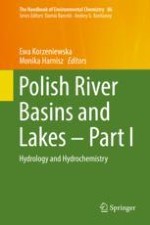2020 | OriginalPaper | Chapter
Trophic State, Eutrophication, and the Threats for Water Quality of the Great Mazurian Lake System
Authors : Waldemar Siuda, Karolina Grabowska, Tomasz Kaliński, Bartosz Kiersztyn, Ryszard J. Chróst
Published in: Polish River Basins and Lakes – Part I
Publisher: Springer International Publishing
Activate our intelligent search to find suitable subject content or patents.
Select sections of text to find matching patents with Artificial Intelligence. powered by
Select sections of text to find additional relevant content using AI-assisted search. powered by
